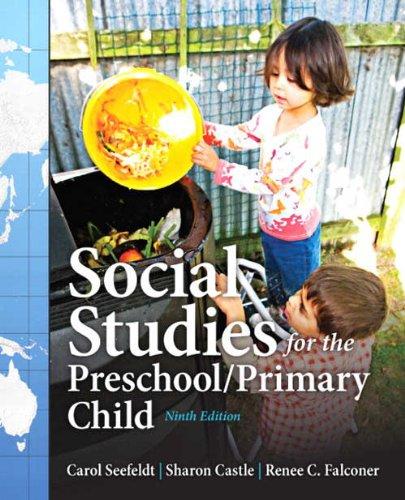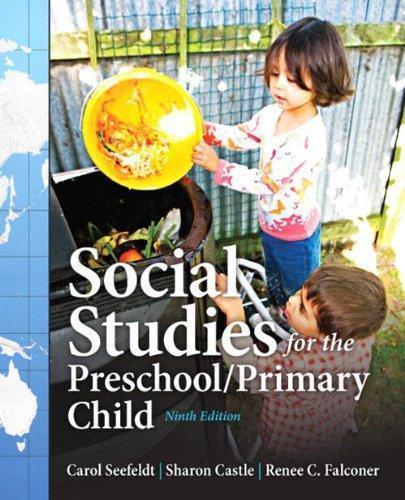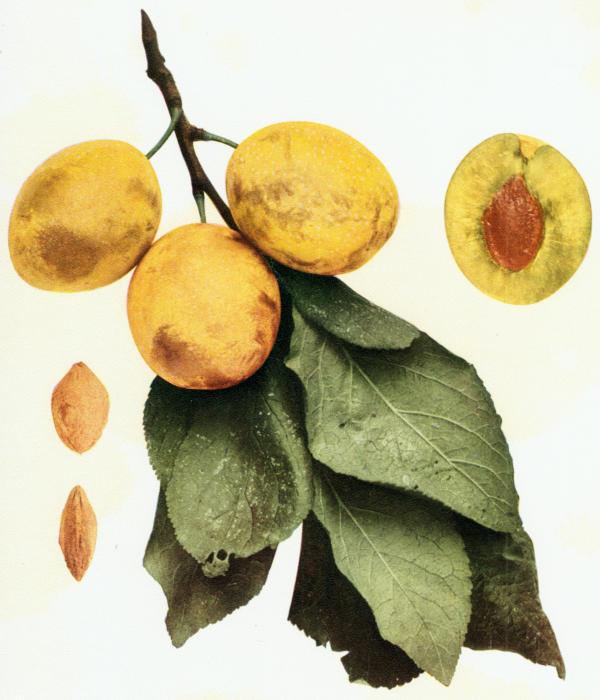Social Studies for the Preschool/Primary Child 9th Edition, (Ebook PDF)
https://ebookmass.com/product/social-studies-forthe-preschool-primary-child-9th-edition-ebook-pdf/
Download more ebook from https://ebookmass.com
More products digital (pdf, epub, mobi) instant download maybe you interests ...
Social Studies for the Preschool/Primary Child 9th Edition – Ebook PDF Version
https://ebookmass.com/product/social-studies-for-the-preschoolprimary-child-9th-edition-ebook-pdf-version/
Social Studies for the Preschool/Primary Child 9th Edition by Carol Seefeldt Page – Ebook PDF Version
https://ebookmass.com/product/social-studies-for-the-preschoolprimary-child-9th-edition-by-carol-seefeldt-page-ebook-pdfversion/
Child Development 9th Edition, (Ebook PDF)
https://ebookmass.com/product/child-development-9th-editionebook-pdf/
Health, Safety, and Nutrition for the Young Child 9th Edition – Ebook PDF Version
https://ebookmass.com/product/health-safety-and-nutrition-forthe-young-child-9th-edition-ebook-pdf-version/
Social Psychology 9th Edition, (Ebook PDF)
https://ebookmass.com/product/social-psychology-9th-editionebook-pdf/
(eTextbook PDF) for Applied Social Research: A Tool for the Human Services 9th Edition
https://ebookmass.com/product/etextbook-pdf-for-applied-socialresearch-a-tool-for-the-human-services-9th-edition/
Social-Emotional Prevention Programs for Preschool Children's Behavior Problems 1st Edition Catrinel Alice ■tefan
https://ebookmass.com/product/social-emotional-preventionprograms-for-preschool-childrens-behavior-problems-1st-editioncatrinel-alice-stefan/
Health, Safety, and Nutrition for the Young Child, 9th Edition – Standalone Book
https://ebookmass.com/product/health-safety-and-nutrition-forthe-young-child-9th-edition-standalone-book/
Empowerment Series: Research Methods for Social Work 9th Edition, (Ebook PDF)
https://ebookmass.com/product/empowerment-series-researchmethods-for-social-work-9th-edition-ebook-pdf/
Another random document with no related content on Scribd:
these characters are so valuable in a native plum that Wyant may well be used to breed from. The trees from which the description here given was made came from C. L. Watrous, Des Moines, Iowa, and to the best of our belief are true to name.
This variety, according to a letter from J. E. Wyant, Shellsburg, Iowa, was found by J. B. Wyant of Janesville, Iowa, while hunting for wild plums in 1866 on the Cedar River near his home. The following year he transplanted the tree to his yard. About 1874, J. E. Wyant told R. Royce of Shellsburg, Iowa, proprietor of the Benton County Nursery, of this tree. Royce secured cuttings from the original tree and began propagating the plum. Fruits were sent to Professor J. L. Budd, Ames, Iowa, who named it Wyant. The variety was introduced by Mr. Royce and was disseminated by him and by Professor Budd. In 1897 it was added to the fruit catalog list of the American Pomological Society.
Tree small, spreading and straggling, flat-topped, very hardy, productive, healthy; branches rough and shaggy, zigzag, thorny, dark ashgray, with numerous, large lenticels; branchlets willowy, slender, long, with long internodes, greenish-red changing to reddish-brown, glossy, glabrous, with conspicuous, raised lenticels of average size and number; leaf-buds small, pointed, strongly appressed.
Leaves falling early, folded upward, oval, one and five-eighths inches wide, three and one-quarter inches long, thin; upper surface green, smooth, glabrous, grooved on the midrib and larger veins; lower surface silvery-green, lightly pubescent; apex acuminate, base abrupt, margin coarsely and doubly serrate, the serrations sharp-pointed, not glandular; petiole one-half inch long, tinged red, pubescent, glandless or with from one to five globose, yellowish-green glands on the stalk.
Blooming season medium to late, of average length; flowers appearing with the leaves, showy on account of the many blossoms and peculiar appearance caused by the numerous long stamens, whitish, with disagreeable odor; borne in dense clusters on lateral buds and spurs, one to four flowers in each cluster; pedicels one-half inch long, slender, glabrous, green, faintly tinged with red; calyx-tube red, obconic, glabrous; calyx-lobes narrow, acute, lightly pubescent on the inner surface, serrate and with numerous marginal hairs, erect; petals small, narrow-ovate, crenate, with narrow, long claws; stamens very numerous; anthers
yellowish; filaments three-eighths inch long; pistil slender, glabrous, shorter than the stamens, often defective.
Fruit mid-season, ripening period short; one and one-quarter inches in diameter, not symmetrical in shape, oblong-obovate to nearly ovate, oblique, somewhat truncate, halves equal; cavity shallow, narrow, flaring; suture a line; apex slightly flattened; color dark carmine over a yellow ground which largely disappears as maturity advances, with thin bloom; dots numerous, very small, light russet, inconspicuous; stem slender, onehalf inch long, glabrous, dehiscent; skin thin, tender, separating readily; flesh dark golden-yellow, juicy, tender and melting, sweet, with the Americana flavor less marked than in other varieties; of fair quality; stone nearly free, seven-eighths inch by five-eighths inch in size, broadly oval, flattened, blunt at the base, somewhat pointed at the apex, with pitted, dark colored surfaces; ventral suture blunt or slightly winged, shallowly ridged; dorsal suture acute, with shallow, narrow, distinct groove.
YELLOW EGG
Prunusdomestica
YELLOW EGG
1. Rea Flora 209. 1676. 2. Ray Hist. Plant. 2:1528, 1529. 1688. 3. Langley Pomona 95, Pl. XXV fig. VI. 1729. 4. Miller Gard. Dict. 3. 1754. 5. Duhamel Trait. Arb. Fr. 2:107, Pl. XX fig. 10. 1768. 6. Knoop Fructologie
2:59. 1771. 7. Kraft Pom. Aust. 2:29, Tab. 175 fig. 1; 38, Tab. 188 fig. 1. 1796. 8. Forsyth Treat. Fr. Trees 20, 21. 1803. 9. Coxe Cult. Fr. Trees 233, fig. 8. 1817. 10. Lond. Hort. Soc. Cat. 149. 1831. 11. Prince Pom. Man. 2:57, 58. 1832. 12. Kenrick Am. Orch. 258, 269. 1832. 13. Floy-Lindley Guide Orch. Gard. 299, 301. 1846. 14. Poiteau Pom. Franc. 1: fig. 1846. 15. Thomas Am. Fruit Cult. 333. 1849. 16. Elliott Fr. Book 424. 1854. 17. Thompson Gard. Ass’t 520. 1859. 18. Am. Pom. Soc. Cat. 88. 1862. 19. Downing Fr. Trees Am. 954 fig. 1869. 20. Pom. France 7: No. 18. 1871. 21. Koch Deut. Obst. 560. 1876. 22. Hogg Fruit Man. 730. 1884. 23. Mathieu Nom. Pom. 431. 1889. 24. Fell Cat. 49. 1893. 25. Guide Prat. 163, 354. 1895. 26. CornellSta. Bul. 131:193. 1897.
Aechte Gelbe Eierpflaume 25. Albert’s Damascene 23, 25. Albertus Damen Pflaume 20, 23, 25. Askew’s Golden 20. Askew’s Golden Egg 16, 19, 22, 23, 25. Aubertiana 21. Bonum Magnum 11, 20, 22, 23, 25. Bonum Magnum 1, 2. Col. Young’s Seedling 16. Dame Aubert 10, 11, 13, 17, 19, 22, 23, 25. Dame Ambert 16. Dame Aubert 5, 12. Damas Aubert 7, 23, 25. Dame Aubert Blanche 10, 17, 19, 20, 22, 23, 25. Dame Ambert Blanche 16. Dame Aubert Grosse Luisante 11. Dame Ambert Jaune 16. Dame Aubert Jaune 10, 11, 17, 19, 20, 23. Darwin Peach 24. Die Albertus Damenpflaume 7. De Besançon 25. De Monsieur 25 incor. Die Grosse Weisse Glanzende 7. Die Kaiserliche Weisse Pflaume ?7. D’OEuf25. D’OEuf Blanche 25. Dutch Plum 1, 11. Dutch Plumb 3. Echte Gelbe Eier Pflaume 23. Edle Gelbe Eger Pflaume 20. Edle Gelbe Eier Pflaume 23, 25. Egg Plum 4, 8, 9, 10, 11, 12, 13, 16, 17, 19, 20, 22, 23, 25. Eier Pflaume 23, 25. Gelbe Eger Pflaume 20, 23, 25. Gelbe Egg 20, 23, 25. Gelbe Malonke 23, 25. Gelbe Ungarische Eier Pflaume 23, 25. Gelbe Marunke 23, 25. Gelbe Eierpflaume 23. Gelbe Eierpflaume 20, 25. Grosse Weisse Glanzende 20, 23, 25. Great Mogul ?2. Grosse Datte ?5. Grosse-Luisante 5, 7, 10, 11, 13, 14, 16, 17, 19, 20, 22, 23, 25. Gros Luisante 12. Gelbe Ungarische Eyerpflaume 20. Grosse Prune Blanche 20, 23, 25. Grosse Maronke 25. Grosse Marouk20, 23, 25. Grosse Glanzende Alberts Pflaume 23, 25. Grosse Glanzende 20, 25. Grosse Glanzende Pflaume 23. Grosse Gelbe Eier Pflaume 23, 25. Grosse Marunke 23. Grünliche Dattel Pflaume von Besançon 23, 25. Hick’s large Egg? 11. Impériale Blanche ?5. Impériale Blanche ?7, 10, 11, 12, 13, 17, 19, 20, 22, ?23, 25. Imperial Blanc 11. Large Yellow Egg 11. Magnum Bonum 19. Monsieur’s Plum ?4, ? 8. Monsieur’s Plum ?4. Mogul 9. Monsieur 11. Mogul 4, 8, 11, 23. Mogul Plum 25. Mogule Plumb 3. Mogule 11. Mogol Plum 20, 23, 25. Mogols Pflaume 20, 23, 25. Mogul’s Pflaume 23, 25. Prune de Monsieur? 4, 6. Prune de Monsieur 23 incor. Prune OEuf 20. Prune Dame Aubert 14, 20. Prune d’Oeuf 20, 23. Prune d’Oeuf blanche 6, 23. Prune d’Inde Blanc 19. Prune De Besançon 20, 23. Prune Dame d’Aubert 21. Prune d’Inde
Blanche 23. Supreme ?14. Wentworth 13. Wentworth ?8, 10, 11, 12, 16, 17, 19, 23, 25. Wentworth Plumb ?3. White Imperial 9, 11, 15, 16, 19, 23. White Imperial 11. White Imperial Bonum Magnum 4, 8. White Holland 3, 4, 8, 10, 11, 12, 16, 17, 19, 23, 25. White Magnum Bonum 9, 11, 13, 15, 16, 19, 20, 23, 25. Weisse Kaiser Pflaume 23, 25. Weisse Hollandische Pflaume 23, 25. White Bonum Magnum 3, 11, 20, 23, 25. White Egg Plum 11. White Magnum Bonum 10, 12, 17, 18, 22, 23. White Mogul10, 12, 13, 16, 19, 20, 22, 23, 25. White Egg 15. White Egg 16, 19, 23, 25. Weisser Kaiser 23, 25. Weisse Magnum Bonum 20, 23, 25. Weisse Kaiserin 23 incor. Yellow Magnum Bonum 10, 15, 16, 17, 18, 19, 22, 23, 25. Yellow Bonum Magnum 20, 23, 25. Young’s Superior Egg ?11. Yellow Egg 18, 23, 25.
The characters of Yellow Egg were given in the discussion of the group which bears its name and but little more needs to be said of the variety. As the largest and handsomest of the yellow plums it is worth consideration by either the amateur or the commercial fruitgrower in New York. At best, however, it is fit only for cooking and is none too good for culinary purposes. The trees are very satisfactory on all but very light soils. As has been suggested before, this plum ought to be crossed with varieties of better quality with the hope of getting as handsome a fruit but one which could be used for dessert purposes.
The references and synonyms show that Yellow Egg is a plum with an interesting history, but unfortunately the accounts of its origin and subsequent history have been but poorly preserved. Rea, in 1676, described the Yellow Egg as the Bonum Magnum or Dutch Plum; we may infer from this that the English obtained the variety from Holland. Knoop of Holland, in 1771, described the variety under the name Prune d’Oeuf Blanche, indicating a French origin. Knoop describes the Prune De Monsieur as similar and this plum has ever since been held as doubtfully identical. Duhamel, in TraitedesArbres Fruitiers, 1768, described Yellow Egg as the Dame Aubert. Kraft in Pomona Austriaca, 1796, gave it as the Die Grosse Weisse Glanzende, oder Die Albertus Damenpflaume. These references show that Yellow Egg was well known at an early date. Because of its close resemblance to many varieties, probably due to the
propagation of seedlings from it, much confusion exists in the nomenclature of Yellow Egg. White Imperial was separated by Duhamel and Prince; but Miller, Thompson and most of the subsequent writers give it as the same. Duhamel believed the Imperial Blanche (White Imperial) to be the Grosse Datte. So, too, the Wentworth was at first separated but, later, was recorded as identical. Koch calls Yellow Egg one of the Datterpflaumen (Date Plums) though he states that there is another Date Plum known by Tragus more than three hundred years ago as Prunidactyla. De Candolle seems to hold to the names Dame d’Aubert and Aubertina for this plum. Professor Budd in exploring southwest Russia and Poland found a Dame Aubert differing from our Yellow Egg only in minor characters which he was told came from central Asia.
The exact date of the importation of Yellow Egg to this country is unknown. Coxe, in 1817, described it as the Mogul and later Prince gave it the name Yellow Egg. Owing to this change in name, we find America now and then given as its place of origin by both American and English writers. In 1862, the American Pomological Society added it to its fruit catalog list under the name White Magnum Bonum but in 1871, the name was changed to Yellow Egg. The Darwin Peach, sent out by Fell, a nurseryman in England, has proved to be identical at this Station and its distributor, in a recent letter, states that this plum, which has been growing on his place thirty years, “is apparently identical to the White Magnum Bonum” which is of course Yellow Egg.
Tree, large, vigorous, round-topped, open, hardy, very productive; trunk roughish; branches numerous, ash-gray, nearly smooth, with rather large lenticels; branchlets slender, short, with long intemodes, greenish-red changing to dull brownish-red, dull, lightly pubescent throughout the season, covered with thin bloom, with few, inconspicuous, small lenticels; leaf-buds above medium in size, long, pointed, free.
Leaves flattened or somewhat folded backward, oval, two and one-half inches wide, four and one-quarter inches long, leathery; upper surface dark green, pubescent, slightly rugose, with grooved midrib; lower surface medium green, thickly pubescent; apex abruptly pointed or acute, base acute, margin doubly serrate, with few dark glands; petiole five-eighths
inch long, thick, reddish-purple, pubescent, glandless or with one or two globose, yellowish-green glands variable in position.
Blooming season short; flowers appearing after the leaves, one inch across, white, with a yellowish tinge at the tip of the petals; borne on lateral buds and spurs, singly or in pairs; pedicels one-half inch long, covered with thick pubescence, greenish; calyx-tube green, campanulate, pubescent; calyx-lobes broad, obtuse, pubescent, glandular-serrate, reflexed; petals roundish-oval, crenate or sometimes slightly notched, tapering to short, broad claws; anthers yellow; filaments three-eighths inch long; pistil pubescent, longer than the stamens; stigma oblique.
Fruit late, season short; two inches by one and five-eighths inches in size, long-oval, compressed, halves nearly equal; cavity of medium depth, narrow, abrupt; suture shallow, often a line; apex roundish; color goldenyellow, covered with thick bloom; dots numerous, small, white, inconspicuous; stem slender, one and one-quarter inches long, pubescent, adhering well to the fruit, surrounded at the cavity by a fleshy collar; skin thin, slightly astringent, separating readily; flesh golden-yellow, rather juicy, moderately coarse, firm, of average sweetness, mild; good; stone semi-free or free, one and one-quarter inches by three-quarters inch in size, oval, rather flat, acute at the base and apex, with roughened and pitted surfaces; ventral suture wide, heavily ridged, often distinctly winged; dorsal suture widely and deeply grooved.
CHAPTER IV
THE MINOR VARIETIES OF PLUMS
Abbaye d’Arton. Domestica. 1. Cat.Cong.Pom.France445. 1906.
This variety came from a chance seedling found in the ruins of the Abbaye d’Arton at Valreas, France; it was propagated in 1897 by M. Valdy of Valreas. Tree very productive; fruit large, obovate; suture obscure; stem short; pale red, darker on the sunny side; bloom thick; flesh yellow, juicy, sweet; good; freestone; mid-season.
Abricotee de Braunau. Domestica. 1. Hogg FruitMan.349. 1866. 2. Oberdieck Deut.Obst.Sort.429. 1881. 3. Hogg FruitMan. 683. 1884. 4. MathieuNom.Pom.423. 1889.
Abricotée de Braunau 4. Braunauer Aprikosenartige 2. Braunauer Aprikosenartige Pflaume 4. BraunauerAprikosenartigeDamascene 4. BraunauerNeueKernfrucht2. Reine-ClaudeBraunau 3, 4.
Dr. Liegel of Braunau, Germany, originated this variety about 1810. Fruit large, roundish; suture distinct; greenish; bloom rather heavy; dots distinct, reddish; flesh yellow, firm, juicy, sweet; good; stone free; mid-season.
Abricotee de Lange. Domestica. 1. MasPom. Gen. 2:103, fig. 52. 1873.
LangesAprikosenpflaume1.
Dr. Liegel of Braunau, Germany, grew this variety and named it after Lange of Altenburg. Fruit of medium size, roundish; suture slight; yellow, blushed in the sun; flesh yellow, tender, sweet, aromatic; good; clingstone; mid-season.
Abricotee de Trauttenberg. Domestica. 1. Mas Pom. Gen. 2:35, fig. 18. 1873. 2. Mathieu, Nom.Pom.453. 1889.
Abricotée de Trauttenberg 2. Abricotée Rouge de Trauttenberg 2. Trauttenbergs Aprikosenpflaume 1. Von Trauttenberg’s Aprikosenpflaume 2.
Liegel raised the Abricotée de Trauttenberg from a stone of the Red Apricot and named it after Baron Emmanuel of Trauttenberg, Prague. Fruit medium in size, oval, red; flesh yellow, firm, aromatic; good; freestone; mid-season.
Abricot Princesse. Domestica. Mentioned in Knoop Fructologie 2:54. 1771.
Admirable. Domestica. Mentioned in Forsyth Treat. Fr . Trees 21. 1803.
Admiral. Domestica. 1. Kenrick Am. Orch. 257. 1832. 2. Downing Fr . Trees Am. 293. 1845. 3. Thomas Am. Fruit Cult. 345. 1849.
Corse’sAdmiral1, 2, 3.
Originated by Henry Corse, Montreal, Canada. Inferior in quality but hardy, productive and showy; rarely grown. Fruit of medium size, oval, sides unequal, light purple; dots yellow; bloom thin; stem long, pubescent; flesh greenish-yellow, juicy; clingstone; midseason.
Admiral Schley. Americana. 1. Ia.Sta.Bul. 46:260. 1890. 2. Terry Cat.1900.
Originated by H. A. Terry of Crescent, Iowa. Fruit roundish, yellow, washed with deep bronze-red; dots small, numerous, yellow, distinct; bloom thin; skin tough; flesh deep yellow, juicy, rich, sweet; very good; stone large, oval, flattened, clinging. Apparently an improvement over Hawkeye.
Advance. Americana. 1. Waugh PlumCult. 142. 1901. 2. Kerr Cat. 1902-3.
Grown by Theodore Williams, Benson, Nebraska, and introduced by J. W. Kerr, Denton, Maryland, in 1902. Fruit large, oval; cavity
very shallow; suture a line; apex slightly depressed; dark red; dots many, conspicuous, yellow; good; clingstone; tree vigorous and productive; said to be resistant to rot.
African. Angustifolia varians. 1. Am. Pom. Soc. Rpt. 160. 1881. 2. CornellSta. Bul. 38:60, 86. 1892. 3. Waugh Plum Cult. 192, 193 fig. 1901.
Originated with G. Onderdonk[227] of Texas and introduced by him in 1870; said to be one of the best varieties of this species. Tree small, spreading; fruit medium to large, roundish to oblong, dull, dark red; dots large and small, white; skin thin, tough; flesh yellow, soft, juicy, subacid; good; stone clinging; mid-season.
Alabama. Triflora×?. 1. CornellSta.Bul.175:154. 1899. 2. Waugh PlumCult.201. 1901.
NormandNo.52
Sent out by J. L. Normand, Marksville, Louisiana. Fruit of medium size, heart-shaped, light yellow with pink cheek; bloom thin; midseason; fruits drop before ripe but mature after falling; good; tree spreading, twiggy; branches smooth, glossy, zigzag.
Albany Beauty. Domestica. 1. Lond.Hort.Soc. Cat.146. 1831. 2. Thomas Am. Fruit Cult. 327. 1849. 3. Mathieu Nom. Pom. 420. 1889.
Belle d’Albany 3. Denniston’s Albany Beauty 2, 3. Denniston’s Albany1.
Produced in the garden of Isaac Denniston, Albany, New York, about 1835. Fruit below medium in size, oval with a slight neck, greenish-yellow with reddish spots on the sunny side; flesh yellow, juicy, rich, sweet; good; stone free, small, pointed; mid-season; tree hardy; productive.
Alberta. Nigra? 1. Can.Exp.FarmsRpt.426. 1900.
A seedling raised at Indian Head Experimental Farm, Northwest Territory, Canada. Fruit large; fairly productive; early.
Alexander. Species? 1. Ill.Hort.Soc.Rpt.135. 1903. 2. Ibid.424. 1905.
Alexander’sLate2.
Mentioned as a late native plum; productive; resistant to rot; clingstone.
Alibuchari. Domestica. 1. Mag.Hort. 9:163. 1843. 2. McIntosh Bk. Gard.2:534. 1855.
An old European prune. Size medium, oval, purple; fair in quality; freestone; shrivels on the tree; hardy; productive.
Alice. Americana mollis. 1. Terry Cat.1900.
Originated by H. A. Terry, Crescent, Iowa, from seed of Van Buren. “Tree a fine upright grower, with large, light red fruit of best quality.”
Allen. Species? 1. CornellSta.Bul.38:78. 1892.
Allen’s Yellow 1.
An obsolete variety from Kansas of medium size, round, yellow and red; skin thick; clingstone.
Allfruit. Simonii × Triflora. 1. Vt. Sta. Bul. 67:5. 1898. 2. Waugh PlumCult.202. 1901.
Grown by Luther Burbank; named in 1898. Described by Waugh as follows: “Fruit oblate, medium size; cavity deep, rounded; stem short; suture rather shallow; color pale red with many large and small yellowish dots and a thin white bloom; skin medium thick; flesh-medium firm, bright yellow; flavor sweet and rich, fragrant; good to best; stone medium to large, slightly flattened, semi-cling; leaf large, oval, pointed, rather finely double crenulate and minutely glandular, rather thick, glistens as if varnished; petiole short, glandular.”
Allie. Nigra? 1. Can.Exp.FarmsRpt.426. 1900.
A seedling raised at Indian Head Experimental Farm, Northwest Territory, Canada. Tree productive; fruit of medium size; skin red;
flavor good; early.
Aloe. Domestica. 1. MontrealHort.Soc.Rpt.55. 1878.
Mentioned as an old Scottish variety; is not hardy at Montreal, Canada.
Alois Reine Claude. Domestica. Mentioned in Mathieu Nom. Pom. 420. 1889.
Alois’ Reine-Claude. Reine-Clauded’Alois.Reine-ClaudeAloise.
Aloo Bokhara. Domestica? 1. Horticulturist3:144. 1848.
A variety noted by Sir Alexander Burnes, while traveling in Bokhara, as having a sweet kernel. He states that the stone, when ripe, can be seen through the skin.
Alpha. Maritima. 1. Kerr Cat.1899. 2. OhioSta.Bul. 162:254, 255. 1905.
A variety selected from wild trees by E. W. Winsor of New Jersey and sent to J. W. Kerr, Denton, Maryland, who introduced it in 1899. Very small, roundish, purple; no cavity nor suture; flesh greenishyellow; poor; freestone; early; tree small, compact, very productive.
Alpha-Americana. Americana. 1. Ia.Hort.Soc.Rpt.86. 1900.
A seedling of De Soto pollinated by Weaver; grown by N. K. Fluke, Davenport, Iowa, in 1890. Fruit large, oval with a truncate base, clear yellow, mottled with light red, lilac blush; suture distinct; flesh yellow, firm and meaty; fair in quality; stone of medium size, flattened, free; mid-season.
Amaryllis. Insititia. 1. Can.Exp.FarmBul.43:33. 1903.
Originated by August Dupuis, Village des Aulnaies, Province of Quebec, in 1890 from seed of Mirabelle. Fruit large, roundish; cavity medium, abrupt; suture distinct; apex rounded; greenish-yellow; dots indistinct; flesh yellow, juicy, sweet, rich; good; clingstone.
Amber. Domestica? 1. Parkinson Par. Ter. 577, 578. 1629. 2. Quintinye Com.Gard.68. 1699.
Described by Parkinson in 1629 as a small, round, yellow freestone plum of mediocre quality; classified by him as “Prunum Ambarinum.”
Amber Primordian. Domestica. 1. Parkinson Par. Ter. 575. 1629. 2. Rea Flora206. 1676.
Mentioned by Parkinson in 1629 as an early, small, round, yellow, watery, worthless plum.
Ambre Tardif. Domestica. Mentioned in Mathieu Nom. Pom. 421. 1889.
AmbréeTardive.
Amelie Blanche. Domestica. 1. Knoop Fructologie2:54. 1771.
Tree productive; fruit of medium size, roundish, yellow; obsolete.
Amelie Noire. Domestica. 1. Knoop Fructologie2:54. 1771.
Of ancient and unknown origin. Tree productive; fruit of medium size, roundish, purplish-black; flesh dry; flavor fair; early.
Amelioree. Domestica. 1. U.S.D.A.Pom.Bul.10:20. 1901.
D’Agen Ameliorée 1.
Ameliorée originated in eastern France and differs from Agen only in being more vigorous; foliage and fruit larger and the season earlier.
American Golden. Hortulana. 1. Mo. Hort.Soc.Rpt.182. 1895. 2. Vt.Sta.An.Rpt. 11:283. 1898.
James B. Wild of Sarcoxie, Missouri, introduced this variety as a seedling found in his neighborhood. Tree vigorous; fruit of medium size, round; suture a line; cavity very shallow; stem medium; bright golden-yellow; dots numerous, large, white; bloom thin; skin thick, tough; flesh yellow, firm, sweet but sprightly; good; stone of medium size, turgid, clinging; late.
American Magnum Bonum. Domestica. 1. Downing Fr . Trees Am. 896. 1869.
Probably a seedling of Red Magnum Bonum from which it differs in that the young shoots are pubescent, the stone clinging and the fruit better in quality.
American Prune. Domestica. 1. Wood Bros. Cat.1898. Probably a synonym.
American Violet. Domestica. 1. LeBon Jard. 1:342. 1882. 2. Can. Exp.FarmBul.2d Ser., 3:49. 1900. P. violette americaine 1.
Tree weak in growth, productive; fruit large, roundish-oval, light purple; bloom thick; flesh yellow, sweet, juicy; quality good; midseason.
American Wheat. Domestica. 1. Downing Fr . TreesAm.289. 1845. 2. Thomas Am. Fruit Cult. 346. 1849. 3. Mas Pom. Gen. 2:129. 1873.
AmericanWheat3. Froment American 3.
A very small, round, pale blue plum with thin bloom; flesh greenish, melting, juicy, sweet; poor; clingstone; mid-season; tree productive; leaves small, light colored.
Ancient City. Domestica. 1. Cultivator 6:270 fig. 1858. 2. Downing Fr.TreesAm.941. 1869. 3. Hogg FruitMan.684. 1884.
Reagles’AncientCity1, 2.
Raised by C. Reagles, Schenectady, New York, supposedly from seed of Washington. Fruit large, roundish; suture deep; sides unequal; yellow, tinged with green, mottled with crimson specks next to the sun; bloom thin; stem of medium length, thick; flesh yellow veined with white, firm, coarse; good; freestone.
Anderson. Americana. 1. Wis. Sta. Bul. 63:27. 1897. 2. Ia. Hort. Soc.Rpt.488. 1904.
Anderson’sEarlyRed1.
Found growing on the Turkey River near Sioux Rapids, Iowa, by Mrs. Vincent Anderson, about 1865. Trees productive; fruit of medium size; good; mid-season.
Angelina Burdett. Domestica. 1. Gard. Chron. 13:600. 1853. 2. Mas Le Verger 6:37. 1866-73. 3. Gaucher Pom. Prak. Obst. 91. 1894.
Raised from seed by Henry Dowling of Woolston, England, about 1845. Tree vigorous, hardy and productive; fruit of medium size, roundish; suture deep, one side enlarged; skin thick; dark purple with brown dots and heavy bloom; flesh greenish-yellow, rich, juicy, sprightly; stone small, obovate, free; mid-season.
Angouleme. Domestica. 1. Waugh Plum Cult. 1901. Reine-Claude d’Angouleme1.
Similar to Reine Claude.
Anna. Americana. 1. MontrealHort.Soc.Rpt.90. 1885.
A variety grown from a wild plum root secured in Wisconsin by Mr. Charles Gibb of Montreal, Canada.
Anna Maria. Domestica. 1. Downing Fr.TreesAm.896. 1869.
Originated by S. D. Pardee, New Haven, Connecticut. Fruit below medium in size, roundish-oval; suture lacking; pale greenish-yellow splashed with darker green; stem short; cavity small; flesh pale green, juicy, melting, rich, sugary; good; stone nearly free; tree moderately vigorous, spreading, productive.
Anna Spath. Domestica. 1. Lange Allgem.Garten. 2:421. 1879. 2. Oberdieck Deut.Obst.Sort.401. 1881. 3. Mathieu Nom.Pom. 421. 1889. 4. Can.Exp.FarmBul., 2d Ser. 3:49. 1900.
AnnaSpaeth3.
Originated with M. Spath at Baumschulenweg, Germany, about 1870. Tree vigorous; fruit of medium size, roundish-oval, flattened at both ends; skin tough, free; brownish-black; dots brownish; bloom thick; flesh greenish-yellow, very juicy, mild; good; freestone; season late.
Annual Bearer. Americana. 1. Wis.Sta.Bul.87:11. 1901.
A seedling grown by Edson Gaylord, Nora Springs, Iowa. Fruit large, oblong; suture distinct; purplish-red on a yellow ground; dots numerous, small; bloom heavy; skin thick, tough; stone strongly flattened, oval, pointed, sharp on both sides; flesh rich; flavor good; mid-season.
Apple. Americana. PattenNo. 40.
A seedling of Hawkeye; fruit large, roundish, dark red; dots conspicuous; suture a line; skin tender; flesh juicy, soft, fibrous, sweet; fair; clingstone; mid-season.
Apple. Domestica. 1. Cole Am. Fr . Book 210. 1849. 2. Downing Fr . TreesAm.373. 1857.
Apple Plum 1, 2.
Originated in the garden of D. U. Pratt, Chelsea, Massachusetts. Fruit large, flattened like an apple; sides unequal; suture distinct; stem short; cavity broad, deep; reddish-purple; bloom heavy; dots yellow; flesh greenish-yellow, tender, slightly coarse, sweet, sprightly; skin astringent; semi-clinging; mid-season.
Apricot. Americana. 1. Kerr Cat. 1894. 2. Colo. Sta. Bul. 50:32. 1898.
Tree bushy; fruit medium in size, roundish; suture slight; skin thick; red over yellow; bloom thin; flesh reddish-yellow, juicy, sweet; quality fair; stone large, flattened, clinging; mid-season.
Aprikosenartige Mirabelle. Insititia. 1. Oberdieck Deut. Obst. Sort.426. 1881. 2. Mathieu Nom.Pom.421. 1889.
MirabelleAbricotée2.
Said to be a synonym of Mirabelle; Oberdieck claims that this variety has firmer and sweeter flesh, and that its shoots are glabrous.
Arab. Domestica. 1. Ind. Hort. Soc. Rpt. 29. 1885. 2. Mich. Sta. Rpt.111. 1887.
Noted in the preceding references as imported from eastern Europe.
Arctic. Nigra? 1. Can.Exp.FarmsRpt.426. 1900.
A variety selected from wild plants by Thomas Frankland, Stonewall, Manitoba, and tested at the Experimental Farm, Indian Head, Northwest Territory, Canada. Fruit large, red; late.
Ashes Seedling. Species? Mentioned in N.Y.Sta.Rpt.9:347. 1890.
Ashridge Black. Domestica. 1. Lond.Hort.Soc. Cat.143. 1831. 2. McIntosh Bk.Gard.2:529. 1855.
An English variety not cultivated in this country. Medium in size, roundish, purple, firm; quality fair; a good kitchen variety; tree hardy and productive.
Assiniboia. Nigra? 1. Can.Exp.FarmsRpt.426. 1900.
A seedling raised at the Experimental Farm, Indian Head, Northwest Territory, Canada; now discarded. Fruit of medium size; early.
Aston. Domestica. 1. Lond.Hort.Soc.Cat.143. 1831.
A small, round, purple, clingstone plum of mediocre quality; obsolete.
Aston Green Gage. Domestica. Mentioned in Lond.Hort.Soc. Cat. 147. 1831.
Atkins. Americana. 1. Ia. Sta. Bul. 46:262. 1900. 2. Waugh Plum Cult.143. 1901.
Beatty1, 2.
Originated with James Beatty at Atkins, Benton County, Iowa, and introduced by R. Royce of the same place in 1894 under the name Beatty. It became confused with the Beaty of Texas and Waugh renamed it, giving it the name of the place of its origin. Fruit large, oval, slightly compressed; cavity small; suture a line; red on a yellow
ground; dots small, numerous; bloom thin; flesh yellow; good; clingstone; mid-season.
A-248. Munsoniana × Triflora. 1. Burbank Cat.22. 1893. 2. Vt.Sta. Bul.5:67. 1898.
An early, dark crimson, heart-shaped plum of medium size, yellow flesh and inferior quality.
Aubert. Domestica. 1. Am. Pom. Soc. Rpt. 61. 1887. 2. Ia. Hort. Soc. Rpt. 86. 1890. 3. U. S. D. A. Rpt. 292. Pl. V c and d. 1893. 4. Am. Pom. Soc. Cat. 25. 1897. 5. Budd-Hansen Am. Hort.Man.328. 1903.
Dame Aubert Jaune 1, 2. Dame Aubert Jaune 3. Riga 115 2. Yellow Aubert ?1, 3, 5. YellowAubert4.
Introduced from Russia by J. L. Budd of the Iowa Experiment Station in 1882. According to the introducer this variety was found in southwest Russia and Poland; said to have come from central Asia. Evidently related to the Yellow Egg, differing in being earlier and of better quality.
Auburn. Domestica. 1. Downing Fr.TreesAm.897. 1869.
A variety said by Downing to be a native of western New York. Fruit medium in size, oval; suture shallow; skin light reddish-purple with a thin bloom; stem short; flesh coarse, orange-yellow, not juicy, sweet, pleasant; good; freestone; early.
Auchtertyre. Domestica. 1. Lond.Hort.Soc.Cat.143. 1831.
A small, oval, purple, early plum; quality medium; freestone; obsolete.
August. Nigra. 1. Bailey Ann. Hort. 20. 1889. 2. Wis. Sta. Bul. 63:27. 1897. AugustRed1.
A large purplish-red variety introduced by J. W. Kerr, Maryland. Fruit oblong; clingstone; tree upright, vigorous, unproductive; foliage resembling that of an apricot.
August Zwetsche. Domestica. Mentioned in Mathieu Nom. Pom. 421. 1889.
Liegel’sAugustZwetsche.
Aunt Ann. Domestica. 1. Hogg Fruit Man. 351. 1866. 2. Downing Fr.TreesAm.918. 1869. 3. Mas Pom.Gen.275. 1873.
Guthrie’s Aunt Ann 1. Guthrie’s Aunt Ann 2. Aunt Ann 2, 3. Tante Anne 3.
This variety was grown in Scotland by a Mr. Guthrie. A large, round, greenish-yellow plum; flesh rich, juicy; freestone; tree hardy, productive.
Aurora. Hortulana. 1. Kerr Cat.1900-03.
Moreman’sCherry1.
Originated by Theodore Williams of Nebraska and introduced in 1898 by J. W. Kerr of Maryland under the name “Moreman’s Cherry;” in 1900, Mr. Kerr changed the name to Aurora. Fruit large, round, cherry-red deepening to dark red; clingstone; season late; tree vigorous, productive.
Austrian Quetsche. Domestica. 1. Lond. Hort. Soc. Cat. 152. 1831. 2. Prince Pom. Man. 2:78. 1832. 3. Downing Fr . Trees Am.311. 1845.
BremenPrune2, 3. QuetschedeBreme3.
A strain of the German Prune from which it differs in being a little later and of somewhat better flavor.
Autumn Gage. Domestica. 1. Cultivator 10:167. 1843. 2. Ann. Pom. Belge 7:43, Pl. 1859. 3. Hogg FruitMan.380. 1866. 4. Mas LeVerger 6:33, fig. 1866-73. 5. Mathieu Nom.Pom.435. 1889.
AutumnGage3, 5. Herbst Reine Claude 5. Prune Autumn Gage 2. Reine-Claude d’Automne 2, 5. Reine-Claude d’Automne 4. Roe’s Autumn 3. Roe’sAutumnGage3, 5.
Raised by Wm. Roe, Newburgh, New York. Tree spreading, hardy, productive; fruit of medium size, oval; suture shallow; stem of medium length; pale yellow with a thin bloom; flesh greenish-yellow, juicy and sweet with a rich and excellent flavor; stone long, compressed, pointed at both ends, free; season late.
Azure. Domestica. 1. Mas Pom.Gen.2:67, fig. 34. 1873.
Reine-Claude Azurée 1.
Mas states that this variety grew in his garden from a sucker. Tree vigorous, medium in productiveness; fruit medium in size, roundishoblate; suture a line; skin tender; purplish-black; stem long, slender to medium; cavity deep; flesh green, fine, tender, soft, juicy, sweet, aromatic; freestone; mid-season.
Bailey. Americana. 1. Kerr Cat.1901-1902.
A variety sent J. W. Kerr, Denton, Maryland, by the Division of Pomology, United States Department of Agriculture, for testing. Tree vigorous, upright, productive; fruit above medium in size, oblong, very dark red; good; clingstone; said to be free from rot.
Bailey. Domestica. 1. CornellSta.Bul.62:20. 1894.
Known only from a plate in the possession of the Rochester Lithographing Company, made some time prior to 1886, representing this plum and stating that it “has not failed to bear for twenty-five successive years.”
Baker. Insititia. 1. Mich. Sta. Bul. 177:41, 43. 1899. 2. Ibid. 187:77, 78. 1901.
Baker Damson 1.
Tree upright, vigorous, unproductive; fruit small, roundish-ovate; stem slender, inserted in a slight cavity; dark blue or black; flesh greenish-amber, juicy; good; stone small, roundish, clinging.
Baker. Domestica. 1. Am.Pom.Soc.Rpt.101. 1891. 2. CornellSta. Bul.131:182. 1897. 3. Brown Bros. Cat. 1900.
Baker’sGermanPrune1, 3.
A seedling of the German Prune which had its origin at Collingwood, Canada, with a Mr. Baker. Tree hardy, an annual bearer, productive; fruit resembles the Italian Prune in color and quality but is a trifle smaller and two weeks later.
Baldwin. Americana. 1. Ia. Hort. Soc. Rpt. 333. 1888. 2. S. Dak. Sta.Bul.93:9, 51 fig. 1905.
A wild variety found by D. L. Royer of Iowa. Tree vigorous; fruit large, round; apex flat; cavity deep, narrow; dark red, mottled with dull yellow; bloom heavy; dots whitish, minute, numerous; skin thick, astringent; flesh dark yellow, flavor pleasant, acid; good; stone semi-free, rounded, thick, of medium size.
Ballonartige Gelbe Zwetsche. Domestica? Mentioned in Mathieu Nom.Pom.421. 1889.
Damas-BallonJaune.Damas-BallonPanachéeVariete.
Ballonartige Rote Damascene. Domestica? Mentioned in Mathieu Nom.Pom.421. 1889.
Damas-BallonRouge.
Bankalari Fruh Damascene. Domestica? Mentioned in Mathieu Nom.Pom.421. 1889.
Bankalari’sRoteFrühDamascene1.
Banker’s Gage. Domestica. 1. Lond.Hort. Soc. Cat.147. 1831. 2. Kenrick Am.Orch.202. 1835.
Originated in New York. Fruit large; flavor good; adapted to drying.
Bant Späte Reine Claude. Domestica. Mentioned in Mathieu Nom. Pom.422. 1889.
Bant’sLateGreenGage.
Baraboo. Americana. 1. Wis.Sta.Bul. 63:28. 1897. 2. Ia. Sta.Bul. 46:262. 1900.
Found wild near Baraboo, Wisconsin, about 1860 and introduced by William Toole of the same place in 1897. Tree vigorous, spreading, symmetrical; fruit of medium size, round, dull yellow, overlaid with red; flesh firm, mild, sweet; quality fair; mid-season; drops badly and is a poor keeper.
Barbary. Domestica. 1. Parkinson Par. Ter. 576. 1629. 2. Rea Flora 207. 1676.
Barberry2.
A large, egg-shaped, early, productive, black plum.
Barkhausen Violette Reine Claude. Domestica. Mentioned in Mathieu Nom.Pom.422. 1889.
Barkley. Americana? 1. Letter from Kerr.
Teeter1.
From Pennsylvania; fruit medium in size, green, blushed with red; good.
Barnsback. Americana. 1. Wis. Sta. Bul. 87:11. 1901. 2. S. Dak. Sta.Bul.93:9. 1905.
Barnsbeck2.
Originated at Vermilion, South Dakota. Fruit large, roundish; suture a line; yellowish overspread with light red; sparsely dotted; heavy bloom; skin medium thick, astringent until fully ripe; flesh pale yellow or reddish, juicy, sweet; good; stone nearly free; mid-season.
Baronne Helen Trauttenberg. Domestica. 1. Mathieu Nom.Pom. 422. 1889. 2. GuidePrat.163, 352. 1895.
A variety said to resemble Italian Prune.
Basaricatta. Domestica. 1. Gallesio Pom.Ital.2: Pl. 1839.
Collo-Torto 1.
An Italian variety described by Gallesio in his Pomona Italiana. Fruit long, prune-shaped, necked; skin golden-yellow; flesh yellow,
firm, sweet and agreeable; a good shipper.
Bastle. Species? 1. Tex.Sta.Bul.32:490. 1899.
Reported as very weak in growth and as having failed to produce fruit.
Batchelor Damson. Insititia. 1. N.Y.Sta.Rpt.12:611. 1893.
Received for testing at the New York Experiment Station.
Bazalicza. Domestica. 1. Mas Le Verger 6:139. 1866-73. 2. Oberdieck Deut.Obst.Sort.441. 1881. 3. Mathieu Nom.Pom.
422. 1889. 4. Can.Exp. Farms Rpt. 402. 1898. 5. Can.Exp. FarmBul.2d Ser., 3:51. 1900.
Quetsche de Bazalicza 1. Bazalicza Zwetsche 1. Bazalicza Zwetsche 2, 3. Bazalicza’s Grosse Blaue Zwetsche 3. Quetsche de Bazalicza3. Bazalicza’s Prune 4. Bazalicza Damson 5.
Raised by Liegel of Braunau, Germany, from seed of Red Magnum Bonum. Tree vigorous, productive; fruit above medium size, oblongoval; suture shallow, halves usually unequal; skin free; dark purple; bloom thin; flesh yellow, sweet; excellent; clingstone; early.
Beach Plum. Maritima.
“Beach Plum” is the common name for Prunusmaritima.
Beals. Domestica.
A seedling raised by George F. Beals, of Viscalia, California, and sent to Nelson Smith of Geneva, New York, for testing. Fruit large, egg-shaped, lop-sided; suture shallow; skin thick; blue, often purplish; dots yellow; flesh firm, yellow, juicy, sweet; stone large, oval, rough; mid-season.
Bean. Americana, 1. Minn. Hort. Soc. Rpt. 128. 1890. 2. Wis. Sta. Bul.63:28. 1897.
Found wild by H. Knudson, Springfield, Minnesota. Fruit below medium in size, oblong; apex flattened; suture depressed; pale yellow tinged with crimson; dots faint; skin astringent unless fully
ripe; flesh pale yellow or reddish, juicy, sweet, rich; stone large, oblong, rough, pointed, grooved on the back; mid-season.
Beaty. Angustifolia varians. 1. CornellSta.Bul. 38:36, 60. 1902. 2. Thomas Am. Fruit Cult. 489. 1897. 3. Tex. Sta. Bul. 32:478. 1899. 4. Waugh PlumCult.192. 1901.
Beauty’s Choice 1. Beaty Choice 2. Beauty 3. Beaty’s Choice4. El Paso4. El Paso 1.
Originated under cultivation with Lee Beaty, Luling County, Texas, and introduced by him in 1877. Tree irregular, spreading; fruit of medium size, roundish; cavity shallow; light red; bloom thin; dots numerous; flesh yellow; good; stone oval, turgid, clinging.
Bechstein Spitzpflaume. Domestica. Mentioned in Mathieu Nom. Pom.422. 1889.
Blaue Zipper . Prunus Oxycarpa. Rosinen Pflaume. Spitz Pflaume. SpitzigeRotePflaume.RoteZwetscheincor. RoteZipper .
Bedford. Nigra? 1. Can.Exp.FarmsRpt.426. 1900.
A seedling raised at Indian Head Experimental Farm, Northwest Territory, Canada. Fruit of medium size.
Beer Plum. Domestica. 1. Ia.Hort.Soc.Rpt.86. 1890.
One of the many Domesticas imported from Europe by Professor J. L. Budd. This one is small and fit only for culinary purposes.
Bell. Species? 1. Tex.Dept.Agr.Bul.12:102. 1910.
Bell’s October 1.
A variety said to be of value near Plainview, Texas.
Belle de Hardy. Domestica. 1. Mathieu Nom. Pom. 422. 1889. 2. GuidePrat.163, 352. 1895.
Said to resemble Agen.
Belle de Louvain. Domestica. 1. Downing Fr . TreesAm.392. 1857. 2. Ibid.898. 1869. 3. Lucas Vollst.Hand.Obst.471. 1894. 4.
GuidePrat.157, 352. 1895.
Large Black Imperial? 4. Plum of Louvain 1. Prune de Louvain 2. Schöne von Lowen 3. SchönevonLowen4.
A seedling found in the nursery of Van Mons at Louvain, Belgium, about 1840. Tree vigorous, a biennial bearer; fruit large, long-oval; suture distinct; deep purple with delicate bloom; flesh firm, yellowish, juicy, rich; mid-season; valuable for culinary purposes.
Belle de Paris. Domestica. Mentioned in Can. Exp. Farm Bul. 2d Ser. 3:49. 1900.
Belle de Riom. Domestica. 1. Lond. Hort. Soc. Cat. 144. 1831. 2.
Mas Pom.Gen.2:83. 1873.
This variety is thought to have originated in the vicinity of the French village of Riom, in the early part of the Nineteenth Century. Tree vigorous, productive; fruit medium, oval; suture indistinct; skin intense purple; dots white; flesh greenish-yellow, melting, rich, sweet, aromatic; very good; stone oval, free; late.
Belle de Schoeneberg. Domestica. 1. Mathieu Nom Pom. 449. 1889. 2. GuidePrat.158, 352. 1895.
Belle de Schöneberg. 1. Gloire de Schöneberg. 1, 2. Rotgefleckte
Gold Pflaume 1. Rothgefleckte Goldpflaume 2. Schöne von Schöneberg 1. SchönevonSchöneberg2.
Tree neither vigorous nor productive; fruit large, roundish, reddish-violet; flesh yellow, sweet, agreeable; good; early.
Belsiana. Cerasifera. 1. Cat.Cong.Pom.France471. 1887.
A wild plum resembling Myrobalan, selected by the Arabs and introduced into France in 1878 by G. Luizet, to whom it was sent by Ferdinand Lombard, horticulturist at Mustopha, Algieria. Fruit of medium size, round; suture indistinct; cavity shallow; skin papery; amber-yellow, with a rose tint on the sunny side; flesh amber-yellow, melting, sweet; stone slightly clinging; early.
Belvoir. Domestica. 1. Hogg FruitMan.680, 686. 1884.
Fruit above medium in size, round; suture faint; skin thin; black with russet markings and dots; flesh yellow, tender, rich; freestone; late.
Bender. Americana. 1. Kerr Cat.1896-7. 2. Waugh PlumCult.143. 1901. 3. Wis.Hort. Soc. Rpt. 121. 1902. 4. S. Dak.Sta.Bul. 93:10. 1905.
PaulWolf4.
Reported to have been grown near Chaska, Minnesota, by Paul Wolf. Tree very vigorous, productive; fruit large, oblong, conical, irregular; suture indistinct; dark red with thick bloom; dots numerous, small; skin thick, tough; flesh light yellow, very firm, meaty; fair to good; stone long, pointed, early.
Benedetto. Domestica? Listed in Mathieu Nom.Pom.422. 1889.
Beni-Detto.
Benedict. Domestica. 1. Downing Fr.TreesAm.899. 1869.
Originated in Pennsylvania. Tree vigorous; fruit small, oval; suture distinct; pale yellow, dotted and splashed with red on the sunny side; bloom thin; flesh pale yellow, juicy, pleasant; good; clingstone.
Beni Botan. Triflora. 1. Va.Sta.Bul.129:111. 1901.
A variety imported by the Department of Agriculture. Benschoten. Domestica.
Pits were left in the cellar of a Mr. Benschoten of Woodstock, Ulster County, New York, by a German emigrant, and from them the above variety was grown. Fruit above medium in size, oval, cream color, mottled with crimson; flesh golden-yellow, sugary, aroma like that of an apricot; season late.
Benson. Hortulana. 1. Kerr Cat. 14. 1898. 2. Am. Pom. Soc. Cat. 40. 1899. 3. Waugh Plum Cult. 177. 1901. 4. Ill. Hort. Soc. Rpt.422. 1905.
Moreman Prune 1. Benson Market 4.
Benson originated with Theodore Williams of Benson, Nebraska; was first called Moreman Prune but was renamed and introduced by J. W. Kerr in 1898. Tree vigorous; fruit medium in size, roundish; cavity shallow; stem slender; suture distinct; deep cherry-red, with numerous, yellowish dots; bloom thin; flesh yellow; quality fair; stone medium in size, oval, clinging; season late.
Berlepsch. Domestica. 1. Mas Pom. Gen. 2:175. 1873. 2. Mathieu Nom.Pom.422. 1889.
Berlepsch’s Grosse Grüne Reine-Claude 2. Berlepchs Renclode Grosse Grüne1. Grosse Reine-ClaudedeBerlepsch2. Grosse ReineClaude Verte De Berlepsch 1.
A seedling raised by Liegel of Braunau, Germany. Tree vigorous, medium in productiveness; fruit of the same flavor and quality as the Reine Claude, of which it is probably a strain to be distinguished by earlier maturity, slightly more depressed form and a paler-colored skin.
Berlet Früh Damascene. Domestica? Listed in Mathieu Nom.Pom. 422. 1889.
Bernsteinzwetsche. Domestica. 1. Mathieu Nom.Pom.422. 1889. 2. GuidePrat.163, 351. 1895.
Ambre de Provence 2. AmbredeProvence1. Bernsteinzwetsche2.
Mentioned in the references cited without description.
Berryhill. Americana. 1. Meneray Cat.
Originated with H. A. Terry, Crescent, Iowa; introduced by F. W. Meneray, Council Bluffs, Iowa. Tree productive; fruit large, red over a yellow ground; skin thin, tender; flesh firm; good; clingstone.
Berry Plum. Species? 1. CornellSta.Bul.38:78. 1892.
Mentioned as a variety growing on the grounds of the New York State College of Agriculture.
Best Black Blood. Triflora. 1. RuralN.Y . 59:655 fig. 245. 1900.
Originated by Burbank and described by him as being productive and vigorous; leaves resembling Simon; fruit large; flesh juicy and firm.
Best of All. Hortulana mineri × Triflora. 1. Vt.Sta.Bul. 67:7. 1898. 2. RuralN.Y . 65:730. 1906. Bestovall 1.
This is a seedling of Miner pollinated by Abundance originating with T. V. Munson, Denison, Texas. Tree vigorous, prolific; fruit of medium size, round, dark red; flesh firm, meaty; good; late.
Beta. Maritima. 1. Kerr Cat.1899-1900.
Selected from wild plants by E. W. Winsor of New York. Fruit yellow, small and round; very prolific; early.
Betterave. Domestica. 1. Noisette Man.Comp.Jard.2:496. 1860.
Tree large and vigorous; fruit large, round, pale yellow, juicy, not pleasant.
Beztercser Grosse Zwetsche. Domestica. 1. Mathieu Nom. Pom. 422. 1889. 2. GuidePrat.163, 352. 1895.
Mentioned in the preceding references; said to resemble Washington.
Biconical. Triflora ×? 1. Vt.Sta.An.Rpt. 14:270. 1901.
A cross between Abundance and “a Chicasaw,” originating with A. L. Bruce, Texas. Leaves Triflora-like with peculiar double, crenulate, glandular margins. Fruit conical, of medium size; cavity shallow; suture faint; skin thin; bright red; bloom moderate; flesh soft, yellow, subacid; quality fair; stone medium in size, round-oval, clinging.
Biery. Triflora. 1. U.S.D.A.Pom.Rpt.45. 1895.
Received from California by J. J. Biery, Covington, Louisiana, wrongly labeled Long Fruit. Fruit spherical, medium in size; cavity deep; suture indistinct; color yellow, blushed with red, patched with russet and with minute, russet dots, skin thin, separating easily from











